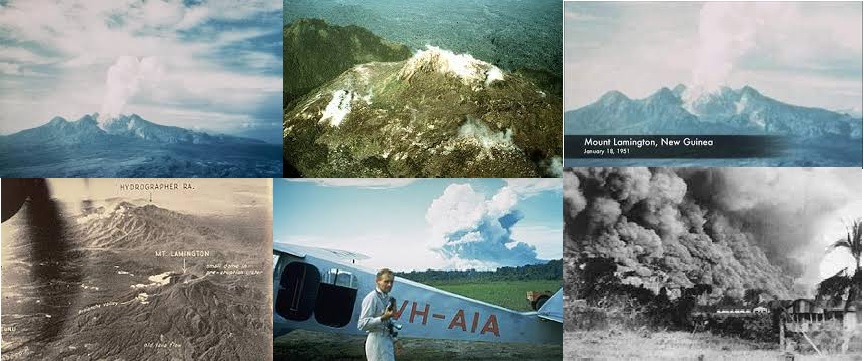Papua New Guinea is a country of diverse landscapes, cultures, and wildlife. Among its many natural wonders is Mount Lamington, an andesitic stratovolcano in the Oro Province. Mount Lamington is not only a spectacular sight, but also a site of historical, ecological, and cultural significance. In this article, we will explore the history, impacts, and attractions of this remarkable volcano.
The 1951 Eruption: A Catastrophic Event
Mount Lamington was not known to be an active volcano until 1951, when it erupted with devastating consequences. The eruption began on January 17, 1951, with minor explosions and earthquakes. Three days later, on January 21, a massive blast occurred that blew away the northern side of the mountain and generated a deadly pyroclastic flow that swept over the surrounding area. The eruption killed about 3,000 people, mostly from the local Orokaiva people, and destroyed several villages and plantations. The eruption also affected the nearby town of Popondetta, where many European settlers and missionaries lived. The eruption was one of the worst volcanic disasters in the 20th century and shocked the world with its suddenness and severity12
The Cultural and Environmental Impacts of the Volcano
The 1951 eruption had profound impacts on the culture and environment of the Oro Province. The eruption disrupted the traditional way of life of the Orokaiva people, who had to cope with the loss of their homes, lands, and relatives. Many survivors suffered from trauma, disease, and hunger. Some also experienced a crisis of faith, as they questioned why their ancestral spirits had allowed such a calamity to happen. Some converted to Christianity, while others retained their indigenous beliefs. The eruption also sparked a political awakening among some Orokaiva leaders, who demanded more autonomy and recognition from the Australian colonial administration34
The eruption also altered the landscape and ecology of the region. The volcano created a new crater and lava domes, as well as a large avalanche valley that extended northward from the breach. The eruption also deposited ash and pumice over a wide area, creating fertile soils that supported new vegetation. The volcano became a habitat for various plants and animals, some of which are endemic to the area. The volcano also attracted scientific interest, as researchers studied its geology, biology, and anthropology56
The Attractions and Activities for Visitors
Despite its tragic history, Mount Lamington is also a destination for tourists who want to experience its beauty and adventure. The volcano offers stunning views of its crater and domes, as well as the surrounding rainforest and mountains. Visitors can hike to the summit or explore the lower slopes and valleys. Along the way, they can observe the diverse flora and fauna of the volcano, including orchids, ferns, birds, butterflies, and reptiles. Some of the wildlife species that can be seen on or near the volcano are the Papuan hornbill, the southern crowned pigeon, the emerald ground dove, the Papuan frogmouth, the green tree python, and the Papuan black snake78
Visitors can also learn about the culture and history of the Orokaiva people, who have lived in harmony with the volcano for generations. They can visit some of the villages that were affected by the eruption, such as Higaturu, Sangara, Awala, and Sumbiripa. They can also see some of the memorials and monuments that commemorate the victims and heroes of the eruption, such as the Bomana War Cemetery (where many Australian soldiers who helped with the relief efforts are buried), the Popondetta Memorial Park (where a cross made from volcanic rocks stands), and the Mount Lamington National Park (where a plaque honors Tony Taylor, an Australian volcanologist who saved many lives by warning people of the impending eruption). Visitors can also experience some of the festivals and ceremonies that celebrate the resilience and diversity of the Orokaiva people, such as the Hiri Moale Festival (which marks the trade relations between the Orokaiva and Motu people), the Kenu and Kundu Festival (which showcases canoe racing and drumming), and the Oro Cultural Festival (which features traditional dances, songs, arts, and crafts)91011
Mount Lamington is a volcanic wonder that has shaped the history, culture, and environment of Papua New Guinea. It is a place of tragedy and triumph, of destruction and regeneration, of sorrow and joy. It is a place that invites visitors to discover its secrets and stories, and to appreciate its beauty and diversity.

References:
1: Mount Lamington – Wikipedia 2: 1951 eruption of Mount Lamington – Wikipedia 3: The 1951 eruption of Mount Lamington, Papua New Guinea: social context and impact | SpringerLink 4: The 1951 eruption of Mount Lamington, Papua New Guinea: the forgotten disaster | SpringerLink 5: Mount Lamington – PeakVisor 6: Mount Lamington, Papua New Guinea | Volcano World | Oregon State University 7: Mount Lamington National Park – PNG Tourism Promotion Authority 8: Birds of Mount Lamington National Park – eBird 9: Bomana War Cemetery – Wikipedia 10: Popondetta Memorial Park – PNG Tourism Promotion Authority 11: Oro Cultural Festival – PNG Tourism Promotion Authority
Google Coordinates: [Mount Lamington on Google Maps](https://www.google.com/maps/place/8%C2%B057’00.0%22S+148%C2%B009’00.0%22E/@-8.9500001,148.1499999,13z/data=!3m1!4b1!4m5!3m4!1s0x0:0x0!8m2!3d-8.95!4d148.15
